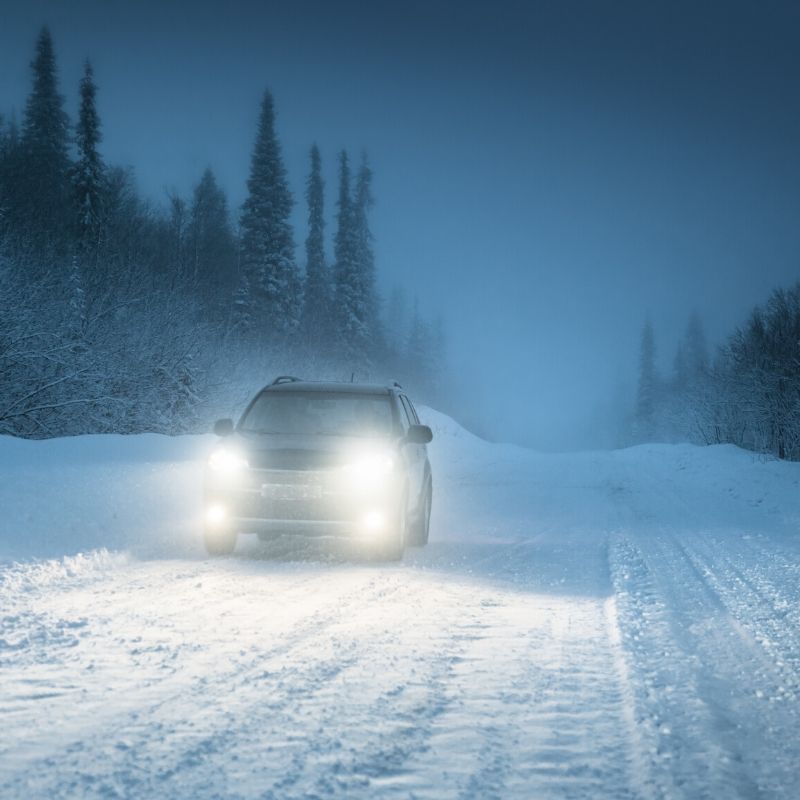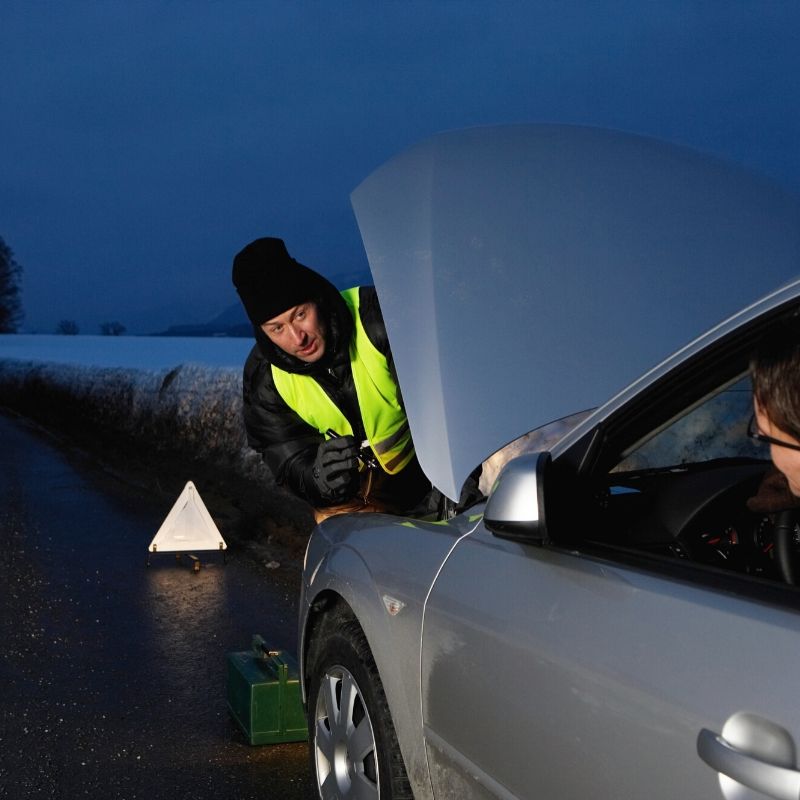Car Care

Lights- Sometimes it can be the middle of the day, but outside looks like it’s the middle of the night. This means that it’s vital that your lights are in good condition. Have a check that all bulbs are working and be sure that they are free of frost and snow before every journey to avoid any mishaps.
Tyres– your tyres are your cars only contact with the road itself, so its important to make sure that they are in top condition. There is a legal minimum tread depth of 1.6mm, but the AA recommends at least 3mm in winter time. As well as checking your grip, check out the pressure of your tyres to ensure that they are not over or under inflated. If possible, get your hands on some winter tyres as these will improve grip in cold and slippy conditions.
Windows– When clearing the windscreen of snow or ice, we tend to forget about our other windows. Visibility is vital so making sure that every possible opportunity to increase it is taken is important. Also, try to clear any snow from your roof before setting off.
Windscreen washers/wipers- It Is good to check that blades are in good condition and that fluid for the screen washer is kept topped up. If available, then an anti-freeze screen wash can be helpful to minimise the chance of the fluid being unavailable to use when needed.
The journey itself
Getting stranded on the road is never anyone’s plan. But when the roads are icy, flooded and at times hit with snowfall, it can unfortunately mean that we get caught out. In that case, it is of course, best to be safe rather than sorry.

Pack a bag– Packing a bag with a just a few essentials and leaving it in your car means that should the worst case happen, you will be gladly prepared. A blanket, warm jacket, sturdy shoes, high-visibility jacket, torch, charged mobile phone, snack and bottled water are essentials. A foldable shovel could also help get you out of a drift.
Plan ahead– The bad weather means that hold-ups on the road are inevitable. So allowing extra time for journeys and thinking about the best route to take can give you the extra advantage to minimise any delays. If you often use smaller, less travelled roads then these may not be cleared or treated as regularly as main routes so it could be worth taking another, busier route if possible. Try checking travel routes to ensure that your route is passable.
Get breakdown cover- Doesn’t matter if the car is brand new, old, well maintained or not, all cars can fall victim to the hardships of winter. If you don’t want to be stranded at the roadside for ages, then getting breakdown cover in place is a very good idea. Also, it is always cheaper to have breakdown cover in place as opposed to having to sign up when you suddenly need it.
Stay in control- In poor conditions, being smooth and gentle with controls is vital. Sudden breaking, accelerating or steering increases the chances of an accident if roads are bad. Remember, braking distances can increase up to 10 times in snow and ice. Anticipation is key. The less that you have to change gear, brake or stop and the more time that you have to manoeuvre then the less likely you are to get stuck or worse, have an accident. When going up hills, leave plenty of space between you and the car in front. That way if the car in front slows, then you can keep your momentum. When going down-hill, again leave as much of a gap as possible. This will give you the ability to not have to use your brakes as much, thus reducing the chances of skidding. If conditions are slippy then pull away in second gear to reduce wheel spin.
Source
Matt Allan- www.inews.co.uk



